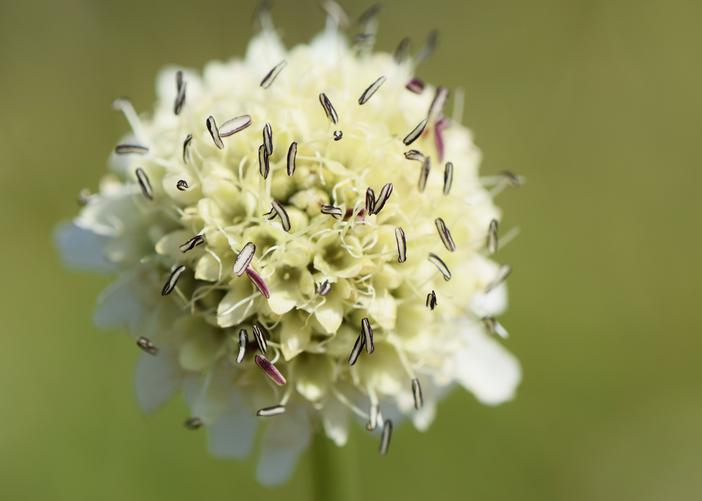Radiant Cephalaria
(Cephalaria radiata)
Radiant Cephalaria (Cephalaria radiata)
/
/

Krzysztof Ziarnek, Kenraiz
CC BY-SA 4.0
Image By:
Krzysztof Ziarnek, Kenraiz
Recorded By:
Copyright:
CC BY-SA 4.0
Copyright Notice:
Photo by: Krzysztof Ziarnek, Kenraiz | License Type: CC BY-SA 4.0 | License URL: https://creativecommons.org/licenses/by-sa/4.0 | Uploader: Kenraiz | Publisher: Wikipedia Commons




Estimated Native Range
Summary
Cephalaria radiata, commonly known as Radiant Cephalaria, is a deciduous perennial herb that is native to Southeastern Europe, including regions such as the Balkans. It thrives in a variety of habitats including grasslands, open woodlands, and meadows, often on calcareous soils. This plant typically grows to a height of 3-4 feet (0.9-1.2 meters) and a width of 2-3 feet (0.6-0.9 meters), with a loose, open habit that adds a light, airy texture to garden spaces. The Radiant Cephalaria is notable for its pale yellow, scabiosa-like flowers that bloom in the summer, providing a long-lasting display of color. The flowers are attractive to pollinators such as bees and butterflies, adding ecological value to the garden.
Radiant Cephalaria is appreciated for its low maintenance requirements and its ability to add height and texture to perennial borders, cottage gardens, and naturalized areas. It is also used for cut flowers due to its long stems and attractive blooms. This plant prefers full sun to part shade and is adaptable to various soil types, including loam and clay, as long as they are well-draining. It is drought-tolerant once established, requiring low to medium amounts of water. While generally pest-free, it can be susceptible to powdery mildew in humid conditions. Deadheading spent flowers can encourage additional blooming and prevent self-seeding if not desired.CC BY-SA 4.0
Radiant Cephalaria is appreciated for its low maintenance requirements and its ability to add height and texture to perennial borders, cottage gardens, and naturalized areas. It is also used for cut flowers due to its long stems and attractive blooms. This plant prefers full sun to part shade and is adaptable to various soil types, including loam and clay, as long as they are well-draining. It is drought-tolerant once established, requiring low to medium amounts of water. While generally pest-free, it can be susceptible to powdery mildew in humid conditions. Deadheading spent flowers can encourage additional blooming and prevent self-seeding if not desired.CC BY-SA 4.0
Plant Description
- Plant Type: Herb
- Height: 3-4 feet
- Width: 2-3 feet
- Growth Rate: Moderate
- Flower Color: Cream, Yellow
- Flowering Season: Summer
- Leaf Retention: Deciduous
Growth Requirements
- Sun: Full Sun, Part Shade
- Water: Medium
- Drainage: Fast, Medium
Common Uses
Border Plant, Butterfly Garden, Low Maintenance
Natural Habitat
Native to grasslands, open woodlands, and meadows in Southeastern Europe, often on calcareous soils
Other Names
Common Names:
Scientific Names: , Cephalaria radiata, Cephalaria fussiana, Cephalaria fussiana, Cephalaria leucantha, Cephalaria leucantha, Scabiosa fussiana, Succisa fussiana, Succisa fussiana, Succisa radiata,
GBIF Accepted Name: